UVM Exploring Biology I: Exam 3
1/25
There's no tags or description
Looks like no tags are added yet.
Name | Mastery | Learn | Test | Matching | Spaced |
|---|
No study sessions yet.
26 Terms
homeostasis
The maintenance of stable internal conditions in an organism despite external changes.
Involves regulatory mechanisms to balance factors such as temperature, pH, and hydration.
positive feedback
process that amplifies changes in a system, leading to a greater output or effect, often used during childbirth or blood clotting.
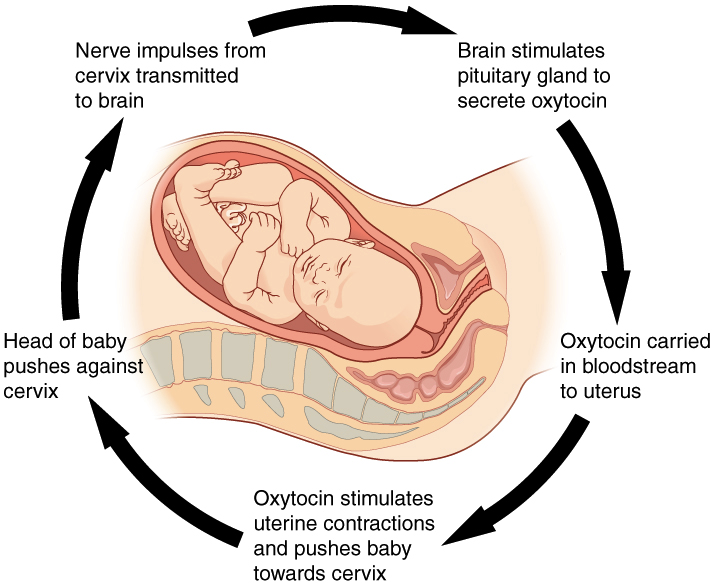
negative feedback
process that counteracts changes in a system, restoring equilibrium by reducing the output or effect, commonly involved in homeostatic regulation.
osmoregulation
The process by which organisms regulate the balance of water and solutes in their bodies to maintain proper physiological function.
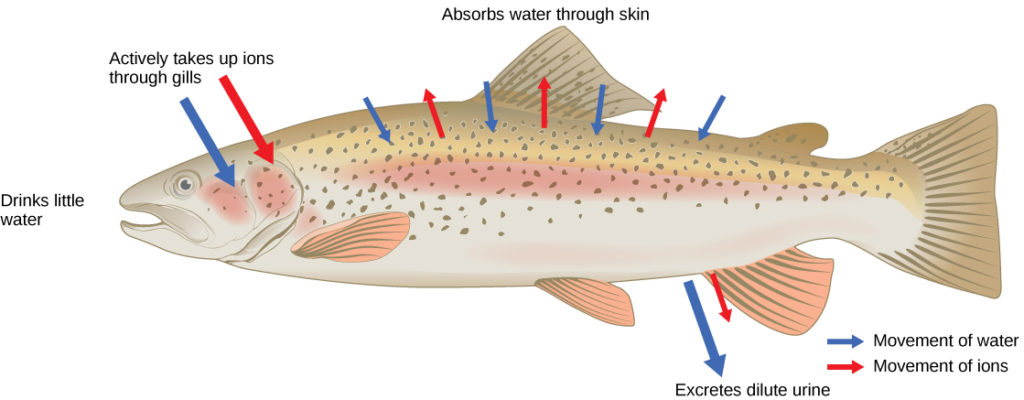
osmoregulator
An organism that maintains internal osmotic balance despite external environmental changes, often by active transport of ions and water.
osmoconformer
An organism that maintains an internal environment that is isotonic to its external surroundings, meaning its body fluids have the same osmotic pressure as the environment.
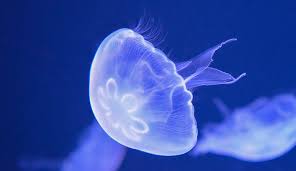
neuron
specialized cells that form the foundation of the nervous system. They are responsible for receiving, processing, and transmitting electrical and chemical signals throughout the body.
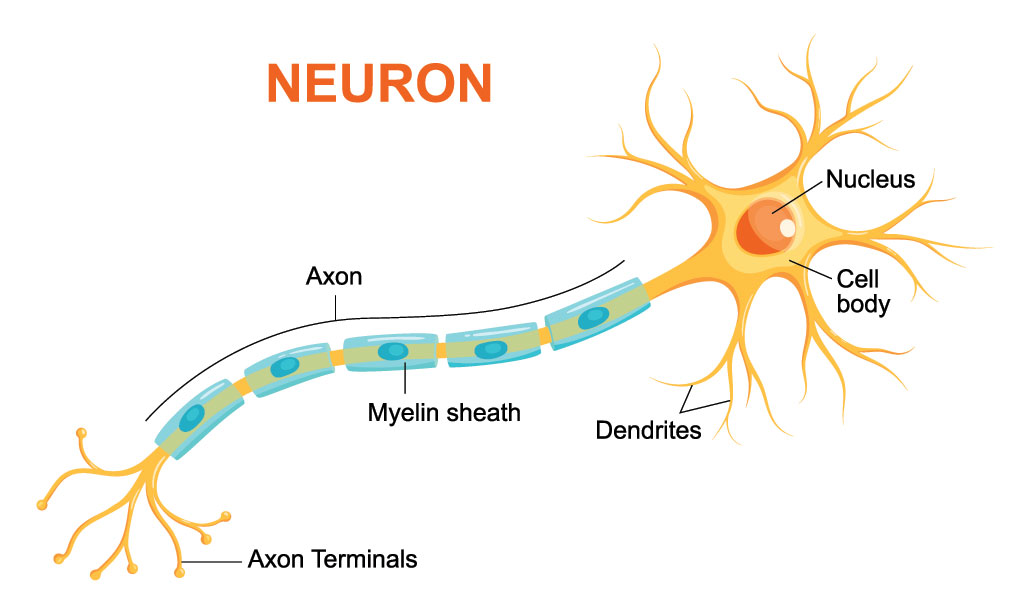
ganglia
a cluster of nerve cell bodies located outside the central nervous system (CNS)
These clusters act as relay stations, transmitting signals between the CNS and the peripheral nervous system.
sensory input
The information gathered from the environment by receptors and sent to the nervous system for processing. It includes stimuli like light, sound, touch, taste, and smell, which are converted into electrical signals by specialized cells and transmitted to the brain via nerves
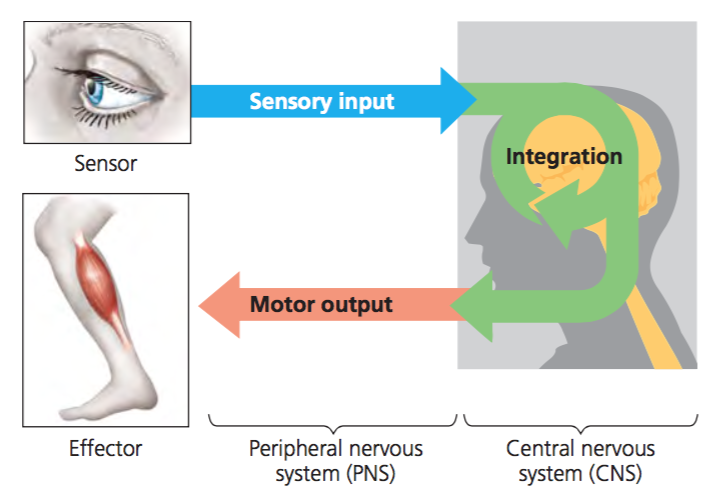
integration
The process where sensory information is received, processed, and combined to produce a meaningful response. This involves the nervous system analyzing and interpreting signals to create a coherent picture, make decisions, and generate a motor output, such as a muscle contraction or gland secretion
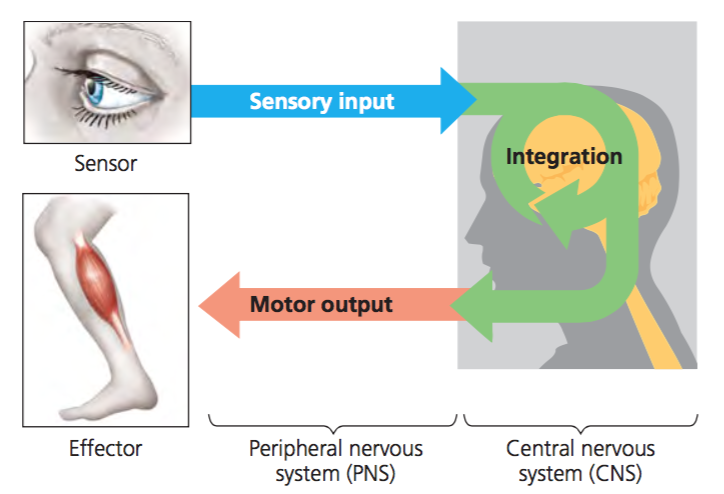
motor output
The nervous system's response to processed sensory input, which involves sending electrical signals from the brain and spinal cord to muscles and glands to trigger a physical action
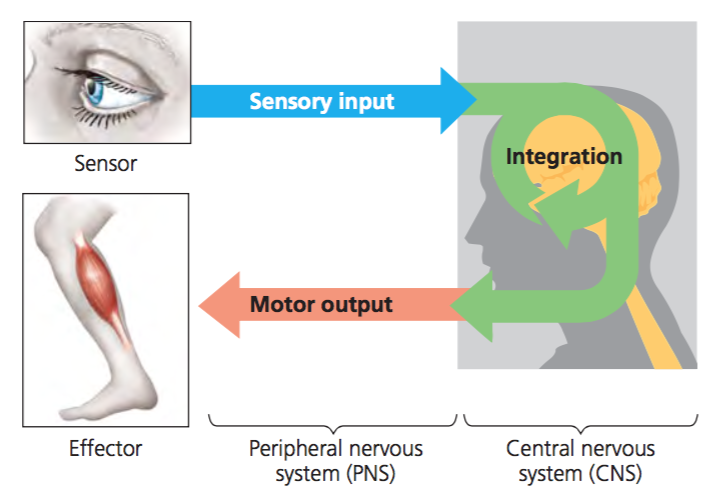
effector cells
muscle or gland cells that respond to a signal from a motor neuron by carrying out a physiological response
sensory neurons
specialized nerve cells in the nervous system that transmit information from sensory receptors to the central nervous system
also known as afferent neurons
interneurons
neurons in the nervous system that connect other neurons, acting as intermediaries between sensory neurons and motor neurons to process information and coordinate responses
found mainly in the brain and spinal cord
responsible for complex functions like thought, learning, and memory, as well as reflexes like the knee-jerk reflex
motor neurons
nerve cells that transmit signals from the central nervous system (brain and spinal cord) to muscles and glands, initiating movement and controlling involuntary functions
dendrite
a short, branched extension of a nerve cell, along which impulses received from other cells at synapses are transmitted to the cell body.
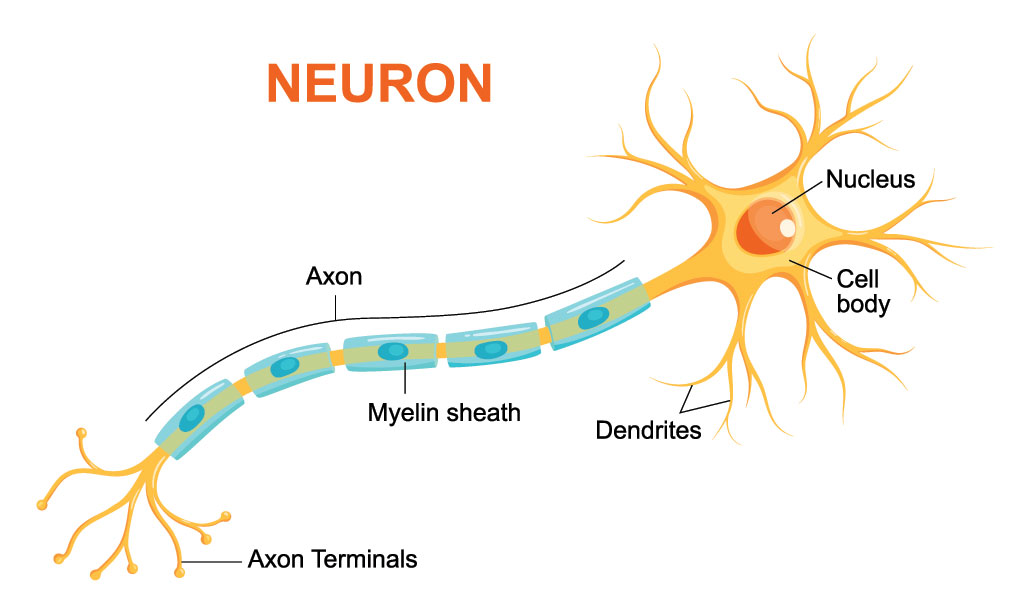
axon
The long, slender projection of a nerve cell that conducts electrical impulses away from the cell body to other neurons, muscles, or glands
its function is crucial for processes like muscle movement, sensation, and cognition
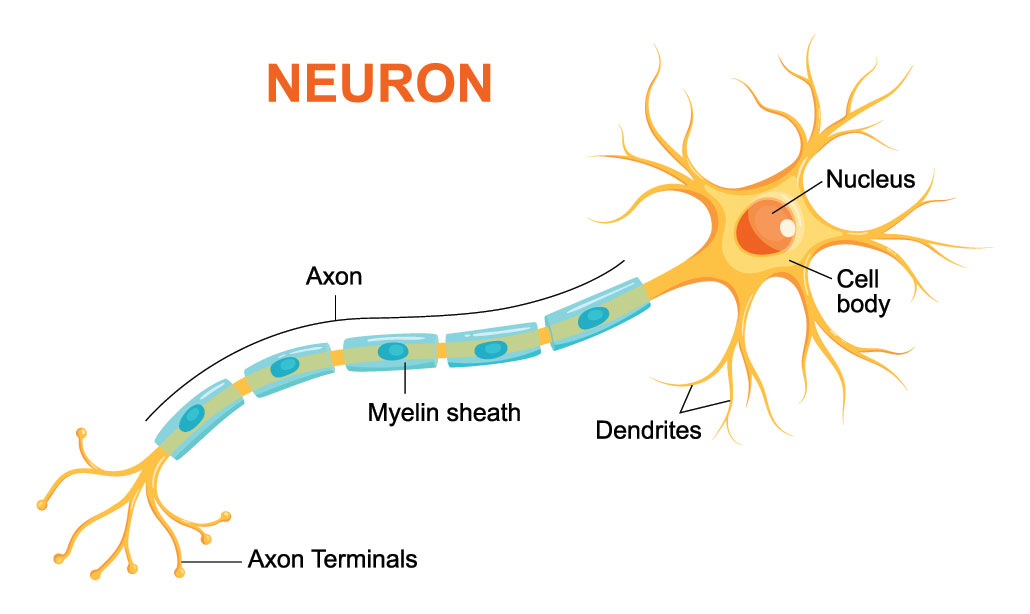
synaptic terminal
The bulb-shaped structure at the very end of an axon that transmits signals to another neuron or cell
Its primary role is to convert an electrical signal (action potential) into a chemical signal to pass information to the next cell.

synapse
The junction between two cells where information is transmitted, most commonly between two neurons or a neuron and a muscle or gland cell
It's the point where a nerve impulse is passed along, typically involving the release of neurotransmitters from the presynaptic terminal, which then bind to receptors on the postsynaptic cell.
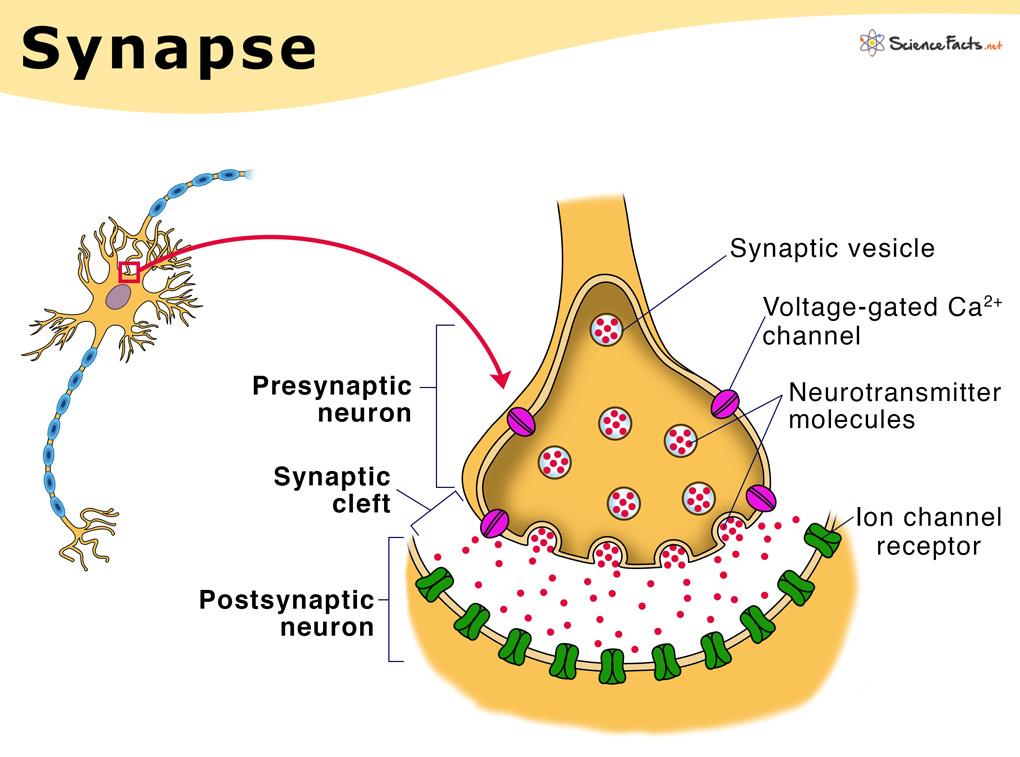
glia
The non-neuronal cells of the nervous system that provide crucial support and protection for neurons
"glue" of the nervous system because they hold nerve cells in place and help them function properly by maintaining the proper environment, forming myelin, and playing a role in signal transmission.
myelin sheath
a fatty, insulating layer that surrounds the axons (nerve fibers) of neurons in the central and peripheral nervous systems.
By insulating the axon, the myelin sheath allows electrical signals to jump between gaps called nodes of Ranvier. This process, known as saltatory conduction, significantly increases the speed of nerve impulse transmission.
The myelin sheath provides a protective barrier around the axon, shielding it from damage.
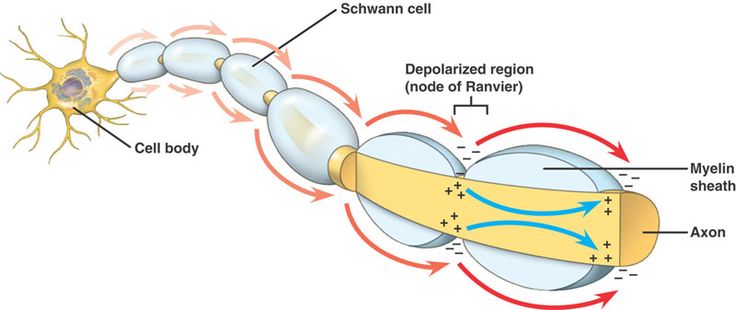
nodes of ranvier
a small gap in the myelin sheath that covers the axon of a neuron, which is essential for rapidly transmitting electrical signals
These gaps occur at regular intervals, exposing the axon so that the electrical impulse can be recharged at each node, a process known as saltatory conduction. This allows nerve impulses to jump from node to node, significantly speeding up signal transmission compared to a continuous, ungapped sheath.
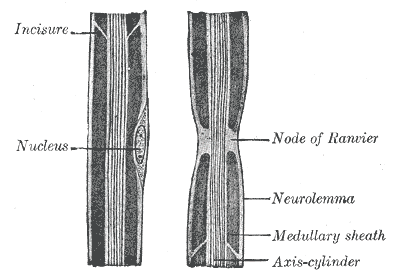
membrane potential
The difference in electric potential (voltage) across a cell's plasma membrane, arising from the unequal distribution of ions like sodium (𝑁𝑎+) and potassium (𝐾+).
Changes in membrane potential are essential for rapid communication in excitable cells, enabling them to send and receive signals through processes like action potentials.
resting potential
The stable, electrical charge difference across a cell's membrane when it is not stimulated,
typically ranges from -60 to -70 millivolts (mV) in neurons
established and maintained by the sodium-potassium pump, which moves three sodium ions out for every two potassium ions pumped in
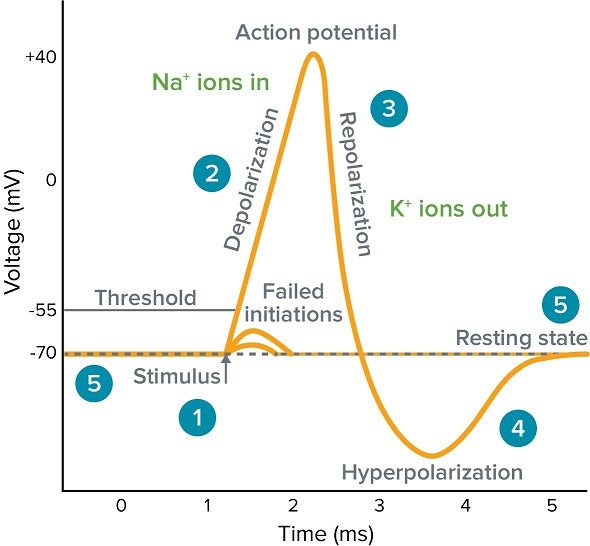
action potential
a brief, electrical impulse that travels down a neuron's axon, used for rapid communication in the nervous system.
generated when a stimulus causes a rapid influx of sodium ions into the neuron, leading to a temporary reversal of the membrane's electrical charge, followed by a repolarization phase that restores the resting potential.
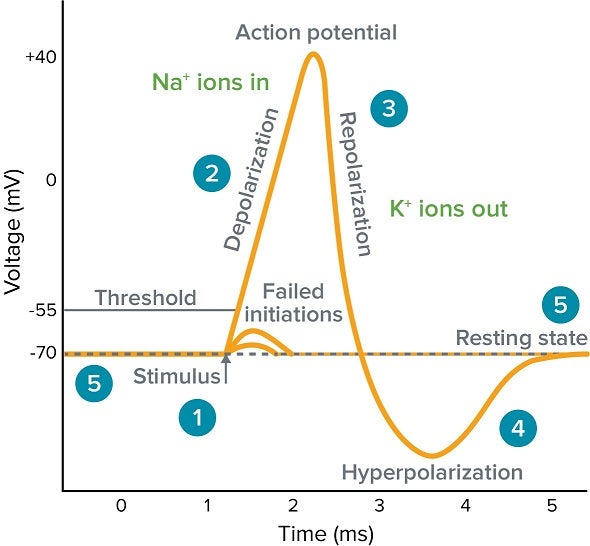
neurotransmitter
a chemical messenger produced by nerve cells that transmits signals across a synapse to other cells, such as other neurons or muscle cells.
responsible movement, mood, and heart rate